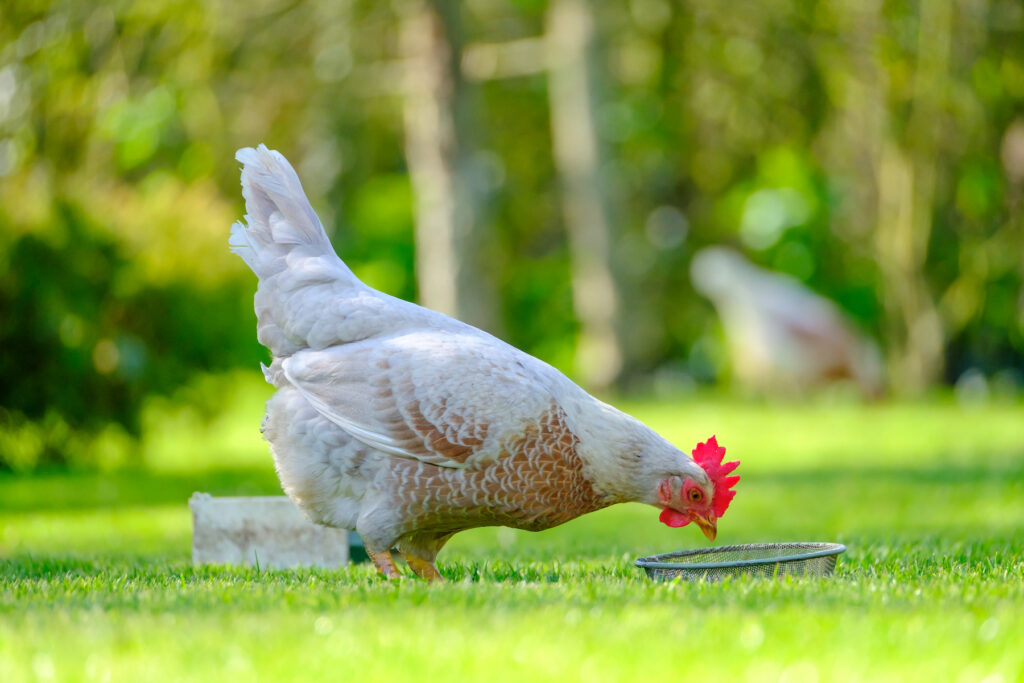Avian flu: Better communication with backyard keepers needed
1st November 2023
New research suggests Defra and APHA must improve communications with small-scale poultry keepers, as a lack of understanding of avian flu rules is hampering control measures.

Confusion over government guidelines is preventing UK poultry keepers from complying with avian flu rules, according new research from the University of Nottingham.
The study, published in the journal Heliyon, follows the UK’s largest avian flu outbreak to date, which began in 2021.
Systems for dealing with the issue tend to be focused on large commercial poultry flocks and do not consider small-scale (backyard) poultry keepers, who have made up 18% of the recent outbreaks, scientists said.
Over 1,500 poultry keepers volunteered to take part in the study, and although 99% were aware of high pathogenicity avian influenza (HPAI) regulations, many of them said that government communication has been unclear, with some participants believing that the measures were only achievable for commercial set ups.
The study highlights a failure by Defra and APHA to connect with small-scale keepers; especially those who see their birds as pets, researchers say.
Key findings
Climate and geography influenced the effectiveness of housing measures and small-scale keepers’ ability to comply, the study revealed.
Some keepers mentioned taking extreme measures to comply by culling birds when they ran out of enough housing or runs that could stand up to strong winds in certain exposed areas.
Available space and household characteristics were also an influence. Common problems included an inability to cover or change existing runs and a lack of advance warning before ‘flockdown’. This is particularly the case for those keeping ducks and geese who may not have enough indoor space to house them and their access to water.
Cost is a key barrier for some individual keepers, with some having to spend thousands of pounds to keep their birds housed adequately without compromising animal welfare.
Participants expressed confusion about the term ‘biosecurity’ and how to use disinfection measures like foot dips. Regulations on the recording of vehicles entering the premises, and the movement or sale of poultry and eggs, were viewed as overly bureaucratic and unachievable.
Vaccination, which is not yet available for birds in the UK, has strong support from keepers as an alternative to culling and confinement.
“Pressing need” for new approach
Sol Elliott, a recently graduated veterinary student at the University of Nottingham, initiated the study. She said it was inspired by a backyard keeper who had interpreted the Housing Order to mean keeping their birds inside their home.
Lead author Dr Rachael Tarlinton, an associate professor in veterinary virology, added: “Official government communications on avian flu were developed with large commercial flocks in mind and caused considerable confusion with small holder flocks, this project explored their issues and concerns, developing more accessible resources for helping them protect their flocks.”
Dr Emma McClaughlin, linguistics research fellow, added: “Effective communication around biosecurity and poultry health has a vital role to play in efforts to control avian influenza in the UK. Our findings highlight a pressing need to move away from a ‘one-size-fits-all’ approach and develop tailored messaging that addresses the specific challenges that small-scale and non-commercial keepers face.”
Recommendations for small-scale poultry keepers
The research team has made several key recommendations, aimed at improving communication between policy makers and small-scale poultry keepers.
These include:
- Clear, simple targeted messaging for small-scale keepers, along with better communication about the risks and benefits of adhering to biosecurity and housing measures. This involves practical illustrations of how to implement the measures, such as photographs, infographics and videos
- Providing affordable suggestions for achieving compliance and considering vaccination as an alternative to housing measures
- Risk assessments to reflect the current UK situation, along with geographically- and time-specific responses that account for varying risk levels
- Dissemination of targeted guidance via online poultry communities, along with additional community-based communication routes for keepers who don’t belong to online or in-person poultry communities (e.g. at vets or feed suppliers).
As part of the project, the research teams created an animation to clearly explain HPAI measures; why they’re needed, who they’re for and how they can be implemented. The animation is being shared with poultry keeper communities and is available to watch online.




